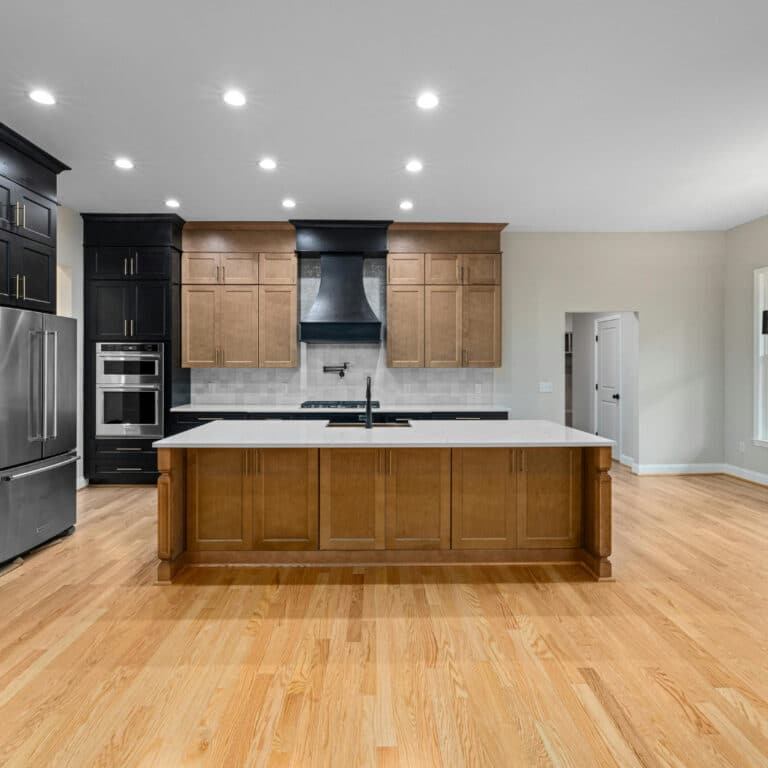
A Practical Guide for Whole Home Remodeling in Northern Colorado
If you’re planning a whole home renovation in Northern Colorado, you may be asking one of the most common homeowner questions: “Can I stay in my home during the remodel?”
The answer depends on the scope of your home improvement project, your comfort level, and the condition of your home during construction. Whether you’re upgrading the kitchen, reconfiguring the floor plan, or remodeling the bathroom, knowing what to expect can help you make an informed decision.
What to Consider Before Living Through a Renovation
Living in your home during a major renovation is possible, but not always practical. You’ll need to weigh the impact of dust, noise, disrupted routines, and temporary loss of essential services like electricity, water, and plumbing.
1. Scope of the Remodel
A small bathroom remodel or laundry room upgrade might not be too disruptive. But full house remodeling, including removing walls, replacing windows, redoing drywall, or updating electrical wiring, often makes your home unsafe or unlivable during the process.
2. Access to Essential Spaces
Do you still have a working shower, toilet, and kitchen area? If not, living in your home may not be feasible. Some families create temporary cooking stations in their garage or basement, while others move out entirely when their kitchen remodel or floor installation begins.
3. Health and Safety Risks
Renovation dust can affect air quality, especially for children, pets, or those with respiratory issues. Projects involving carpentry, paint, or tile removal may stir up allergens.
4. Budget and Project Timeline
Relocating during your house remodel will increase your overall cost, but may allow contractors to complete the work faster. Living on-site might save money but could extend your project timeline due to limited working hours or delays in accessing key areas.
5. Compliance and Planning
Your general contractor should provide a clear home remodeling plan that addresses building codes, safety protocols, and access to utilities. A well-structured project plan helps you avoid surprises—and sets realistic expectations.
Tips for Living at Home During a Remodel
If you’re committed to staying put during your home improvement, use these strategies to maintain comfort and minimize disruption:
Create a Construction-Free Zone
Designate one part of the house—perhaps a bedroom or finished basement—as a clean, livable space. Keep it separate from active remodeling areas.
Set Up a Temporary Kitchen
If you’re undergoing a kitchen remodel, relocate small appliances like a microwave, toaster, and coffee maker to a safe area. Keep pantry items organized and use a utility sink if your main plumbing is disconnected.
Communicate With Your Contractor
Establish clear expectations about work hours, parking, noise, and clean-up. This ensures your contractors respect your living arrangements while still making progress.
Protect Belongings
Cover your furniture, electronics, and cabinetry to prevent damage from dust and debris. Use plastic sheeting or tarps and store valuables away from the job site.
Consider Strategic Absences
Even if you stay in your home overall, plan to leave during the loudest or messiest parts of the renovation—such as demolition, flooring, or ceiling removal.
When Is It Better to Move Out?
While living through a house renovation is possible, there are times when temporary relocation is safer and more efficient. You should consider moving out if:
- Your remodeling services include removing a roof, gutting bathrooms, or reworking electrical systems
- The HVAC system will be turned off during extreme weather
- You won’t have access to essential living areas like the laundry room, shower, or toilet
- The remodel projects will span multiple months
Living off-site may increase your short-term expenses, but it can also reduce stress, shorten the remodeling timeline, and even protect your belongings.
Choosing the Right Approach for Your Whole Home Remodel
No two home renovations are alike. Whether you choose to stay or go, your decision should be guided by comfort, safety, and a clear understanding of the work involved. Work with experienced house remodelers who understand how to phase out construction, limit dust, and keep your home as livable as possible throughout the process.
At Discount Decor, we’re proud to help Northern Colorado homeowners bring their dream homes to life—with thoughtful planning, expert design, and top-tier execution. From the kitchen and bathroom to the laundry room and basement, we manage every detail of your whole home remodeling project.
Ready to Remodel Without the Headaches?
Whether you’re planning a full house remodeling project or a phased room-by-room upgrade, Discount Decor provides the remodeling services you need to transform your space. Our team will help you navigate every detail—floor plans, paint colors, timelines, budgets, and more—while keeping your comfort and safety at the center of every decision.
Contact us today to schedule your free consultation for whole home remodeling in Loveland, CO, and let’s create a home you’ll love for years to come.
Frequently Asked Questions (FAQ)
1. Can I live in my home during a whole home remodel?
Yes, but it depends on your home renovation scope. If your floor, kitchen, or bathroom is under heavy construction, you may want to relocate temporarily.
2. What parts of the house should I remodel first?
Start with high-traffic areas or those impacting plumbing, lighting, or electrical wiring—like the kitchen, bathroom, or laundry.
3. Will staying in the home slow down the remodeling process?
It can. Contractors may need to work in phases or limit noisy/dusty work to specific hours, which may extend your total home remodel cost and timeline.
4. What’s the cost difference between staying and relocating?
Staying may save on temporary housing but increase project costs due to delays. Moving out may allow a contractor to finish faster—reducing labor hours.
5. How do I protect my furniture and floors during a renovation?
Cover items with plastic or canvas sheets. Use runners or floor protectors to avoid damage to tile, wood, or carpet flooring.

